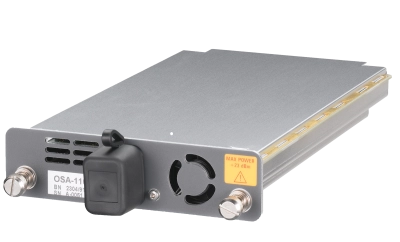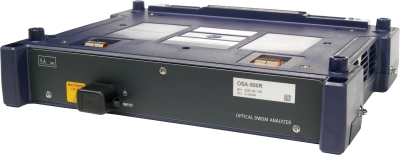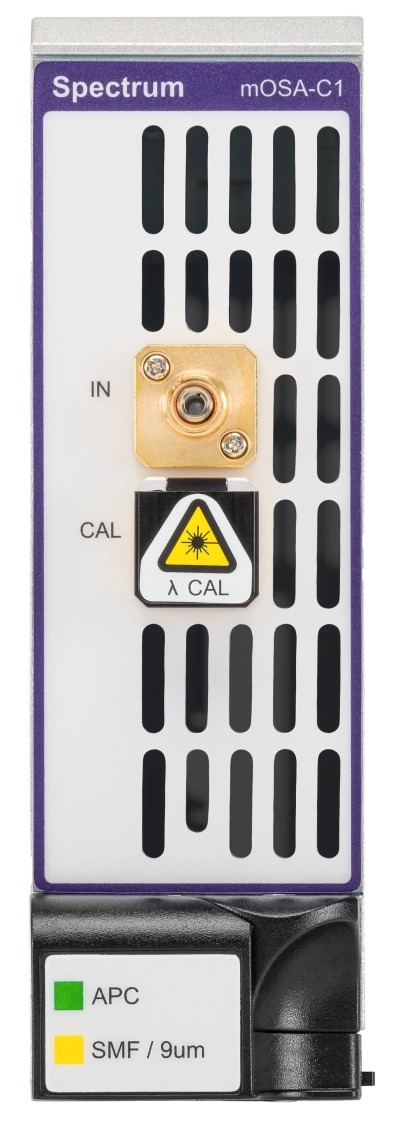Optical Spectrum Analyzers (OSA)
VIAVI covers a broad range of OSA needs with many compact solutions.
Products
-

Nano OSA Module (4100 Series)
Compact Nano OSA™ modules offering high resolution measurement over full wavelength band for channel verification...
-

CWDM Optical Spectrum Analyzer Module (COSA-4055)
The COSA-4055 module offers the functionality and speed of an OSA in a handheld form factor at a fraction of the...
-

DWDM Optical Channel Checker Module (OCC-4056C)
The OCC-4056C module offers the functionality and speed of an OSA in a handheld form factor at a fraction of the...
-

Compact Optical Spectrum Analyzer Module (OSA-110 Series)
Compact full band optical spectrum analyzers for CWDM, DWDM and ROADM systems testing.
-

High Performance Optical Spectrum Analyzer Module (OSA-500 Series)
Full range of optical spectrum analyzers for spectral measurements in CWDM, DWDM, and ROADM testing-based systems,...
-

High Resolution Optical Spectrum Analyzer Module (OSA-610)
High resolution OSA with lab performance in a field-ready tester for spectral analysis of 10/40/100 and 400 G DWDM...
-

Smart Access Anywhere (SAA)
A solution that enables centralized support, on-demand test and live results analysis to support and coach...
-

Optical Spectrum Analyzer Module (mOSA)
Optical grating-based spectrum analyzer with lab-grade spectral performance in a module for the MAP Series
-

MAP Hi-Resolution Optical Spectrum Analyzer Modules (mHROSA)
The MAP-based integrated multi-wavelength meter and high resolution optical spectrum analyzer module combines sub-...
Optical Spectrum Analyzers (OSA) from VIAVI
An optical spectrum analyzer extends the principles of spectrum analysis to the optical realm by measuring important wavelength, power, and noise characteristics of light waves. As fiber optic networks and laser applications have expanded, optical test solutions and practices have evolved to keep pace with dense wave division multiplexing, tightened channel spacing, and a host of new optical sources and transmission protocols.
VIAVI has developed an industry-leading portfolio of optical spectrum analysis test solutions for lab, field, and manufacturing applications. This includes comprehensive test coverage for long haul, access network, and data center interconnect fiber links with high channel counts, strict signal to noise requirements, and coherent technology enabling high speed transmission. Development and production of optical systems and components is supported by compact full-band OSA modules with lab grade performance and resolution.
White Papers & Books
Support at Every Step
We provide support, services, comprehensive training and the resources you need. It’s all part of what we do to maximize the value of your VIAVI investment.
Ask an Expert
Contact us for more information or to receive a price quote. We have the experts to give you the right answer on any of your questions.









